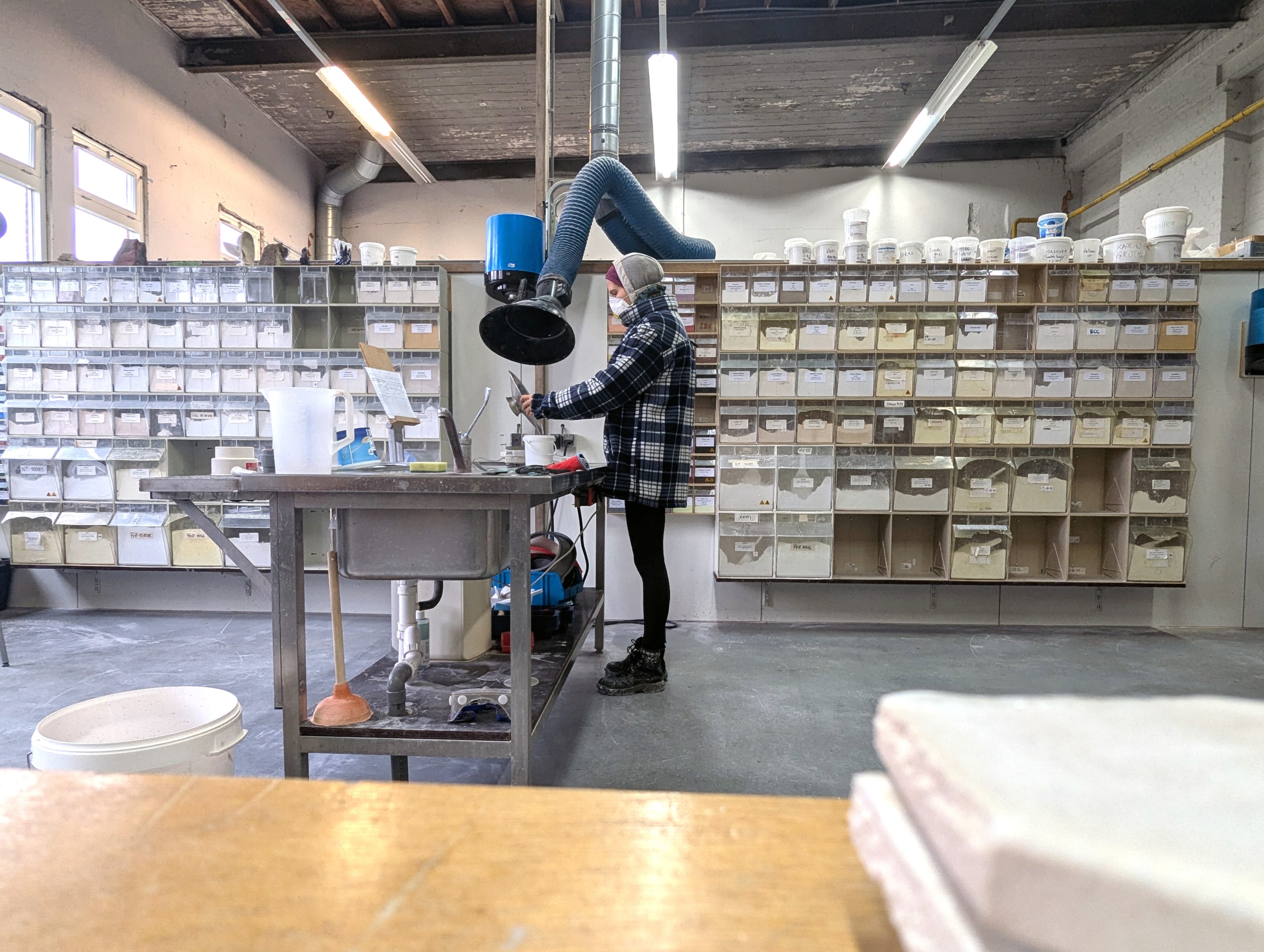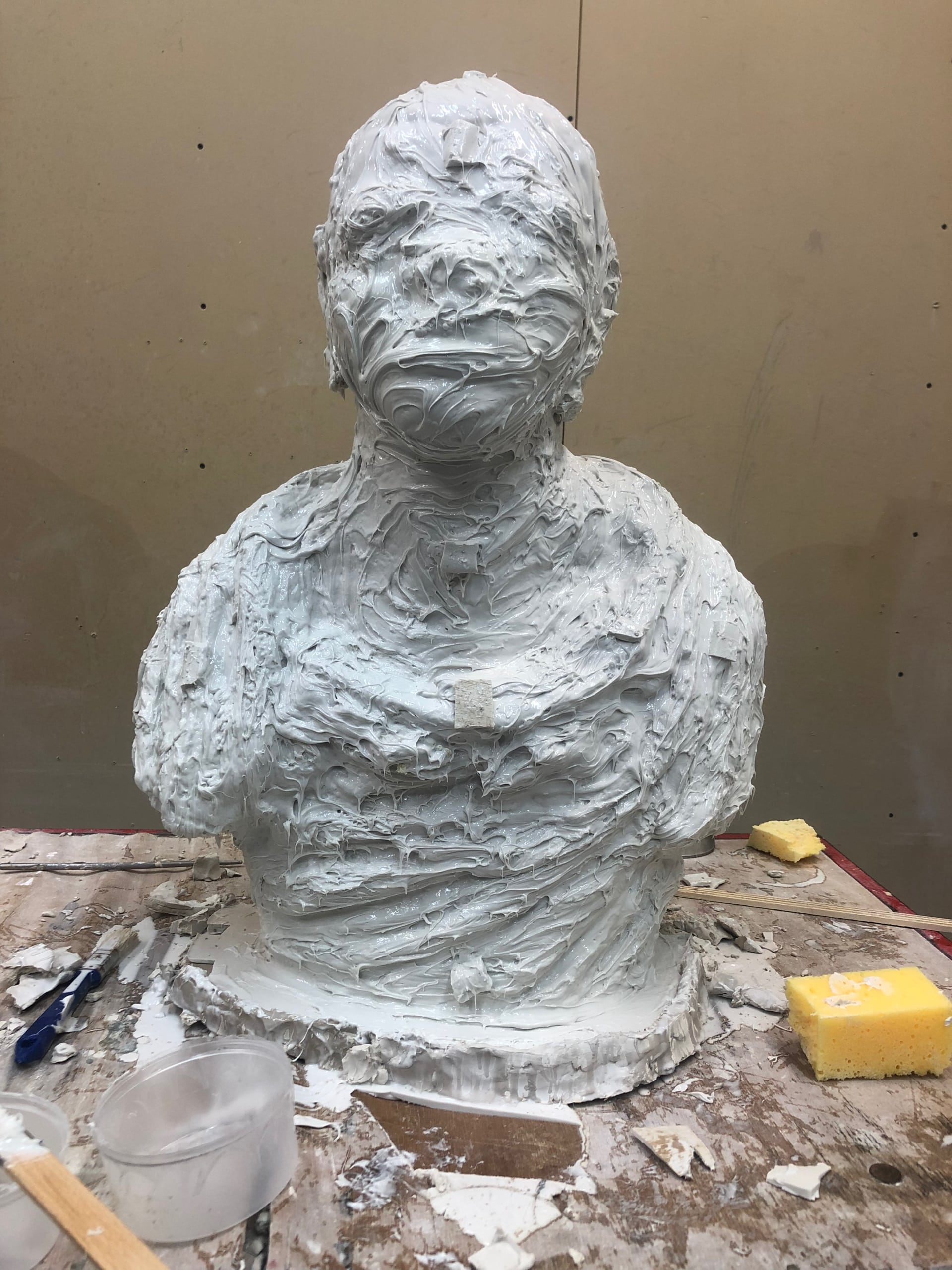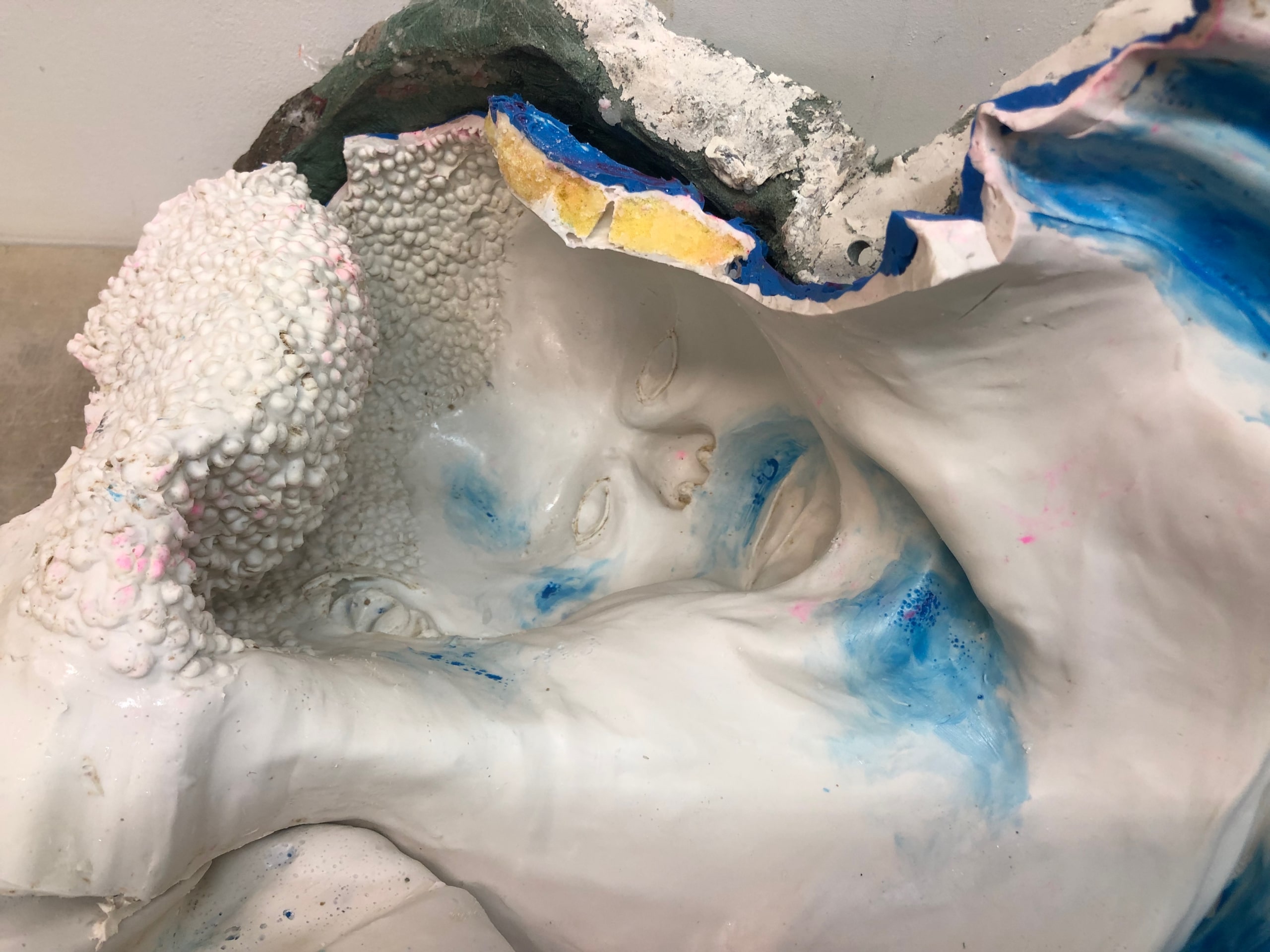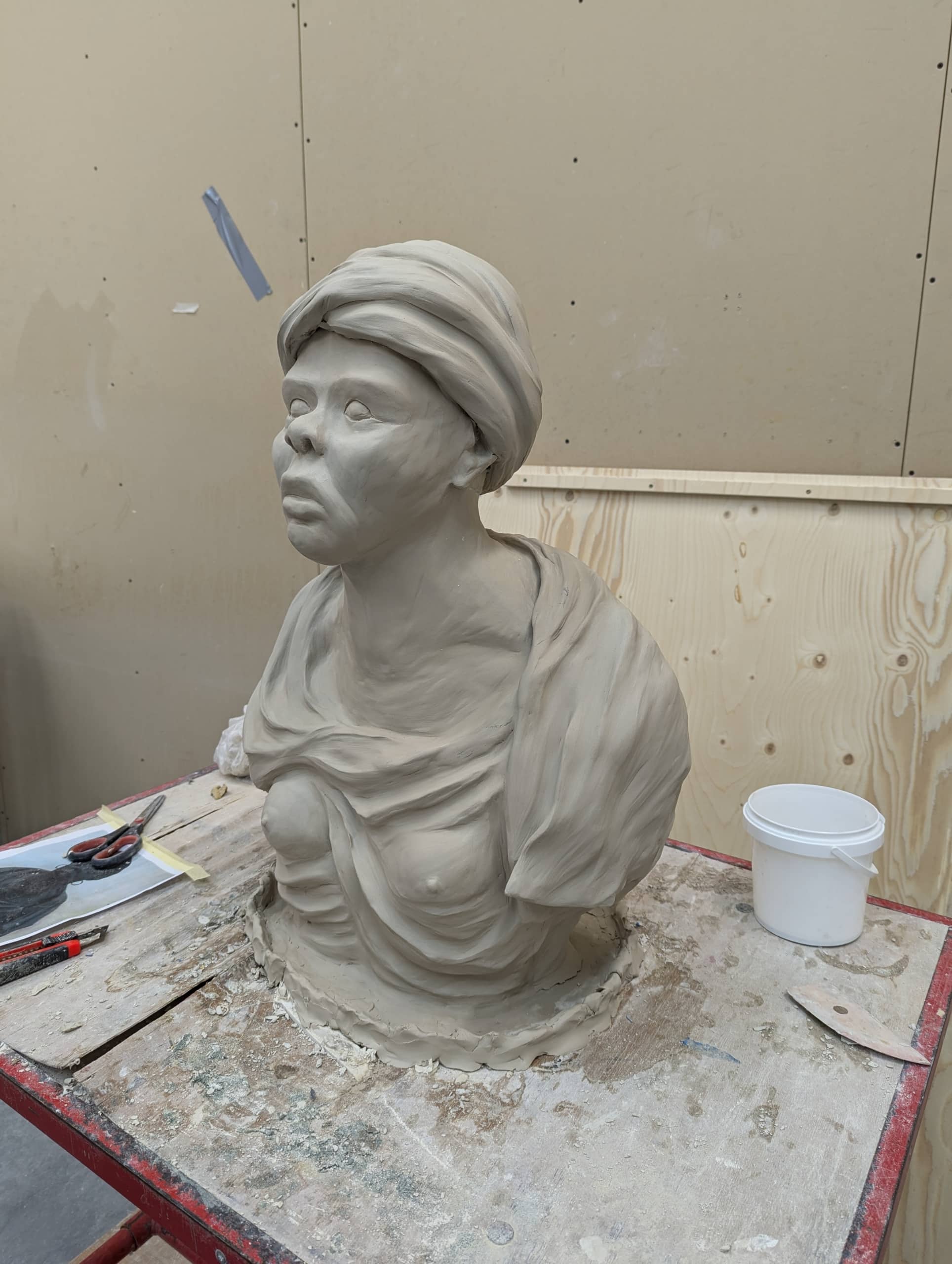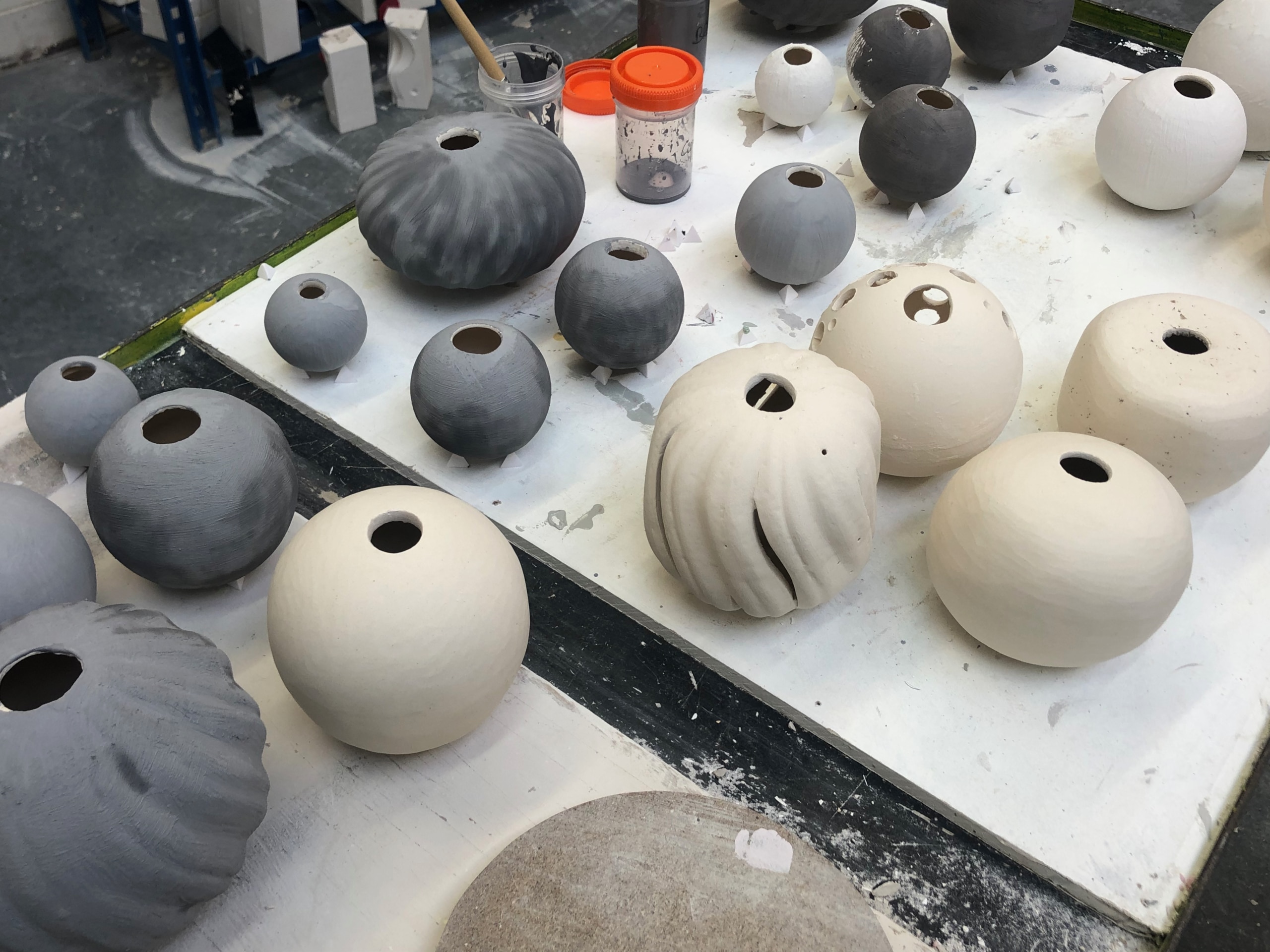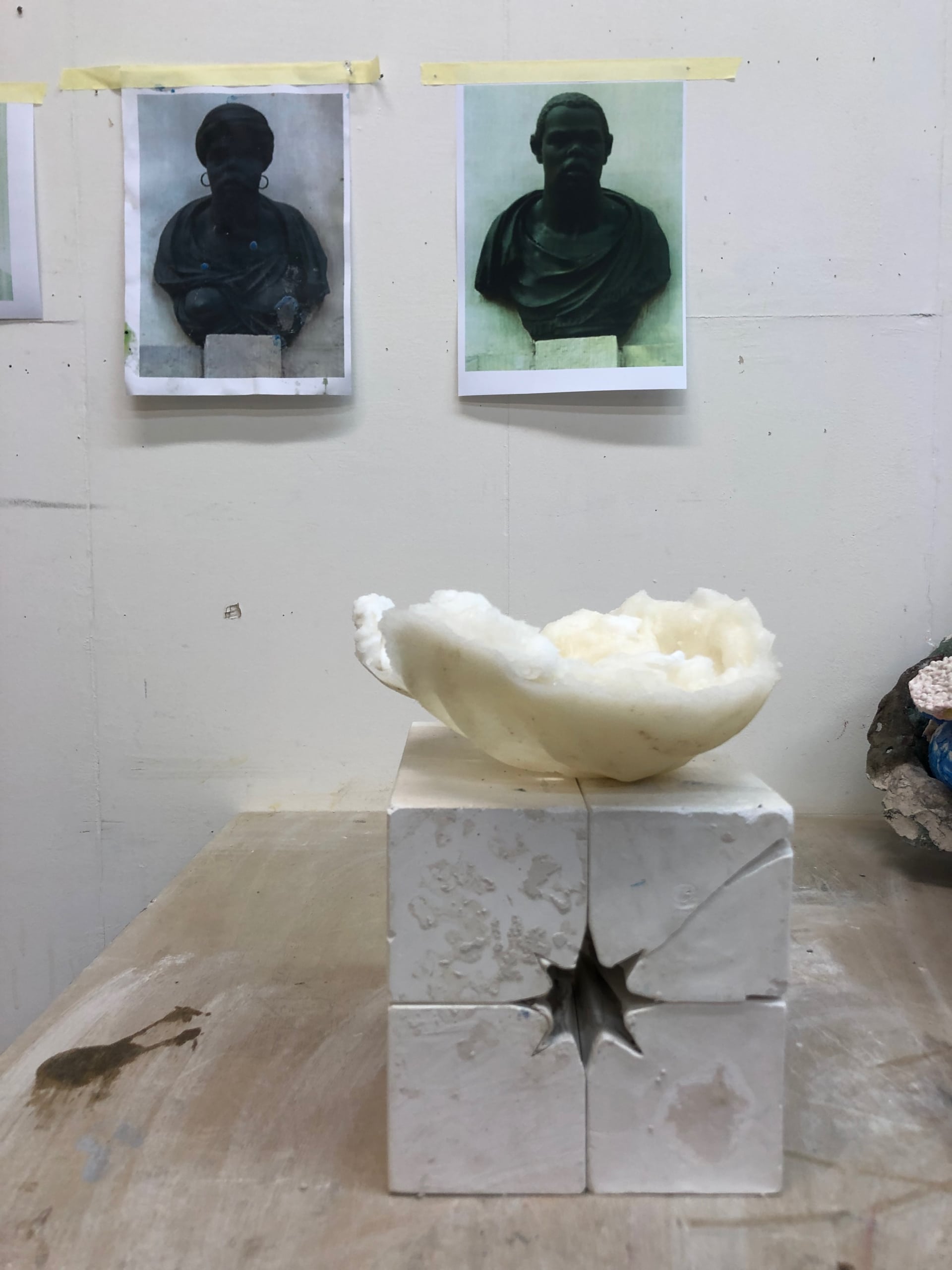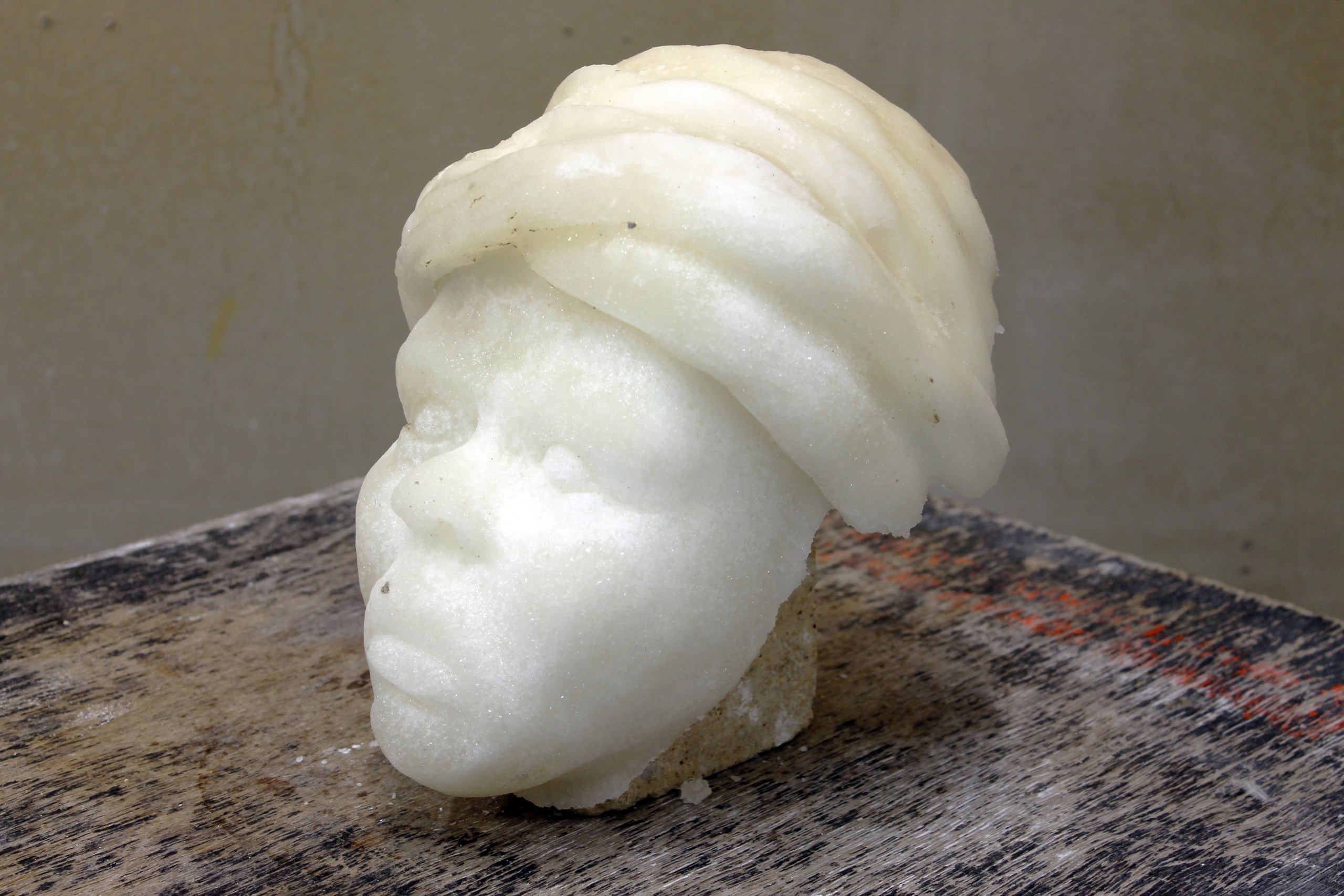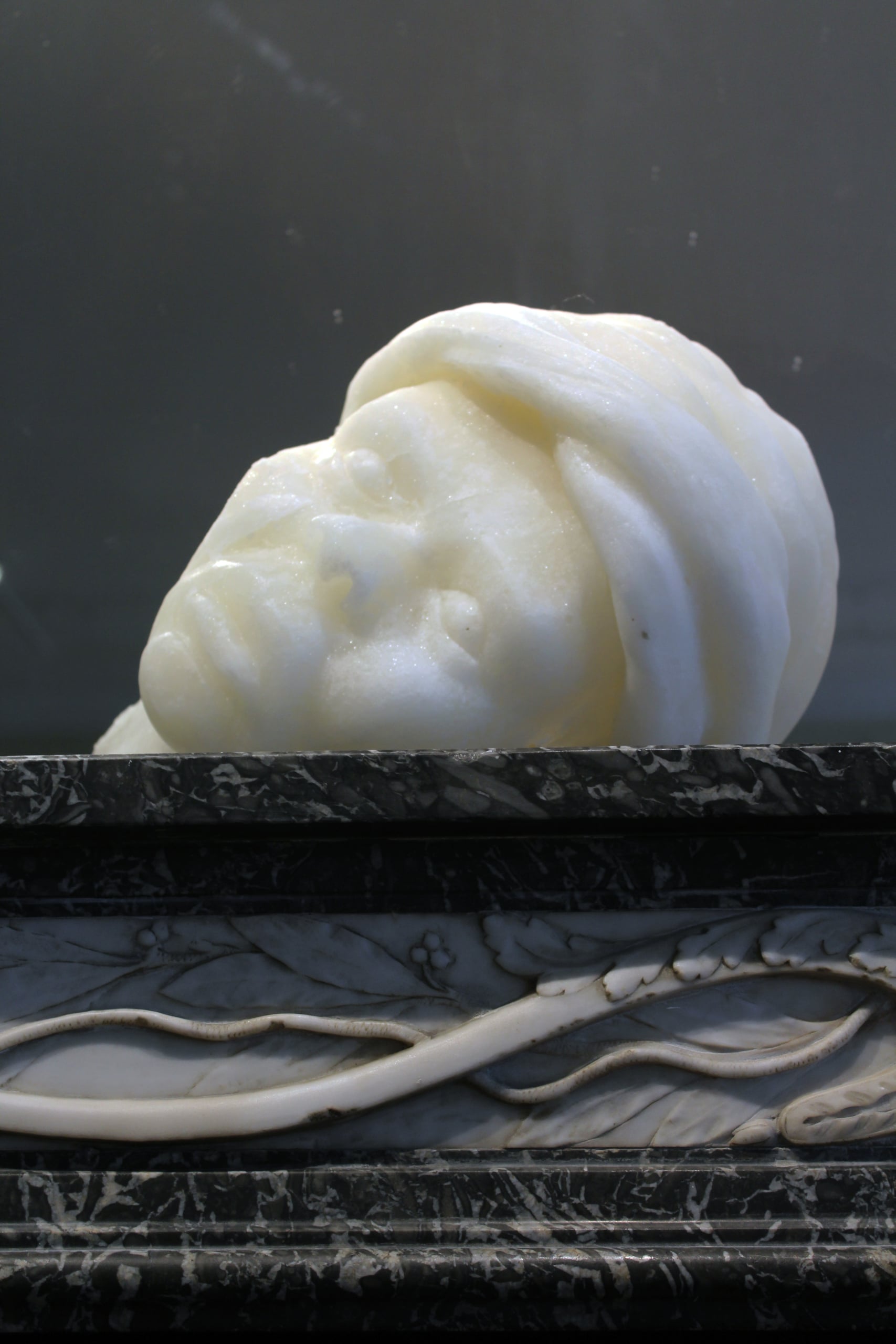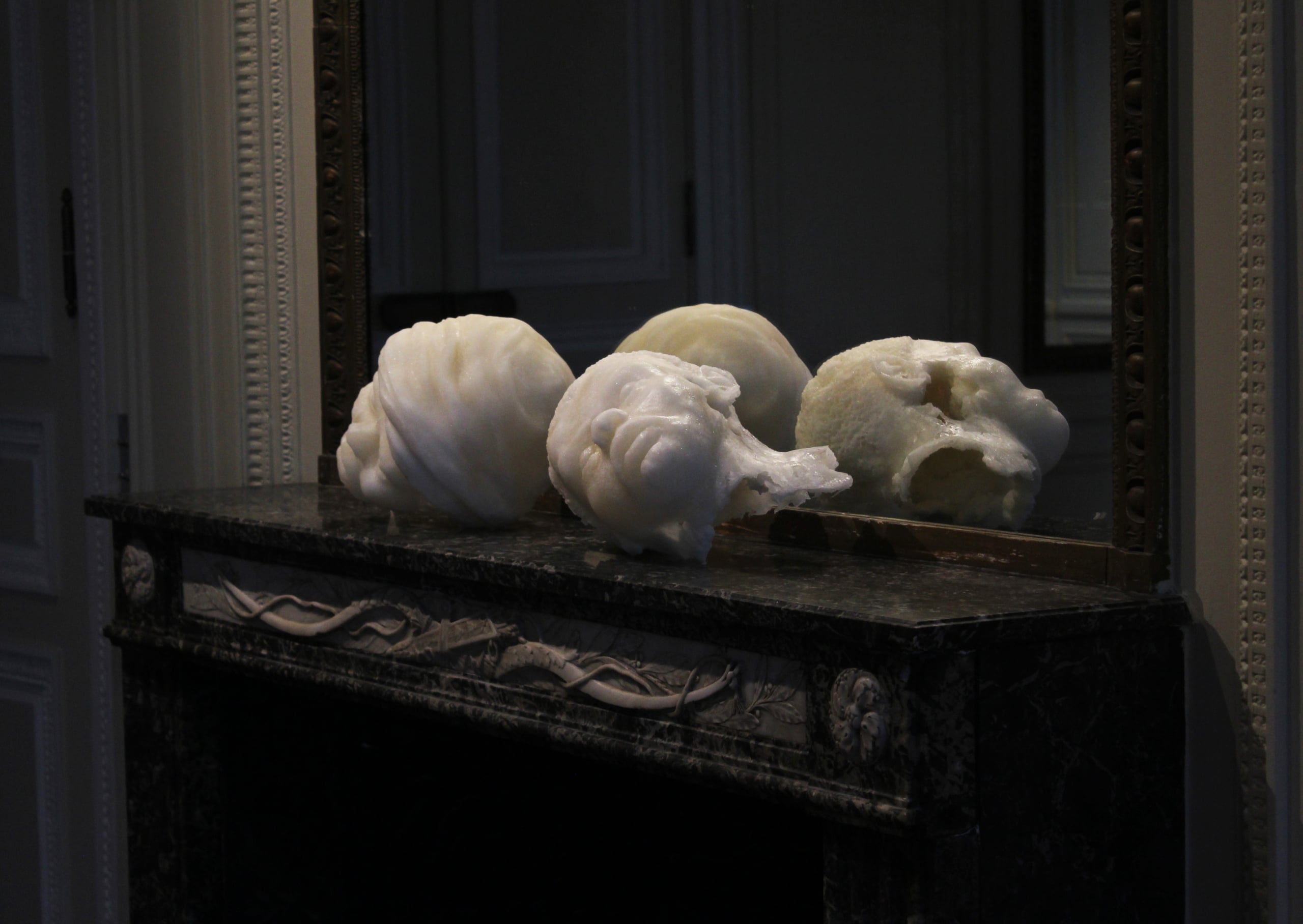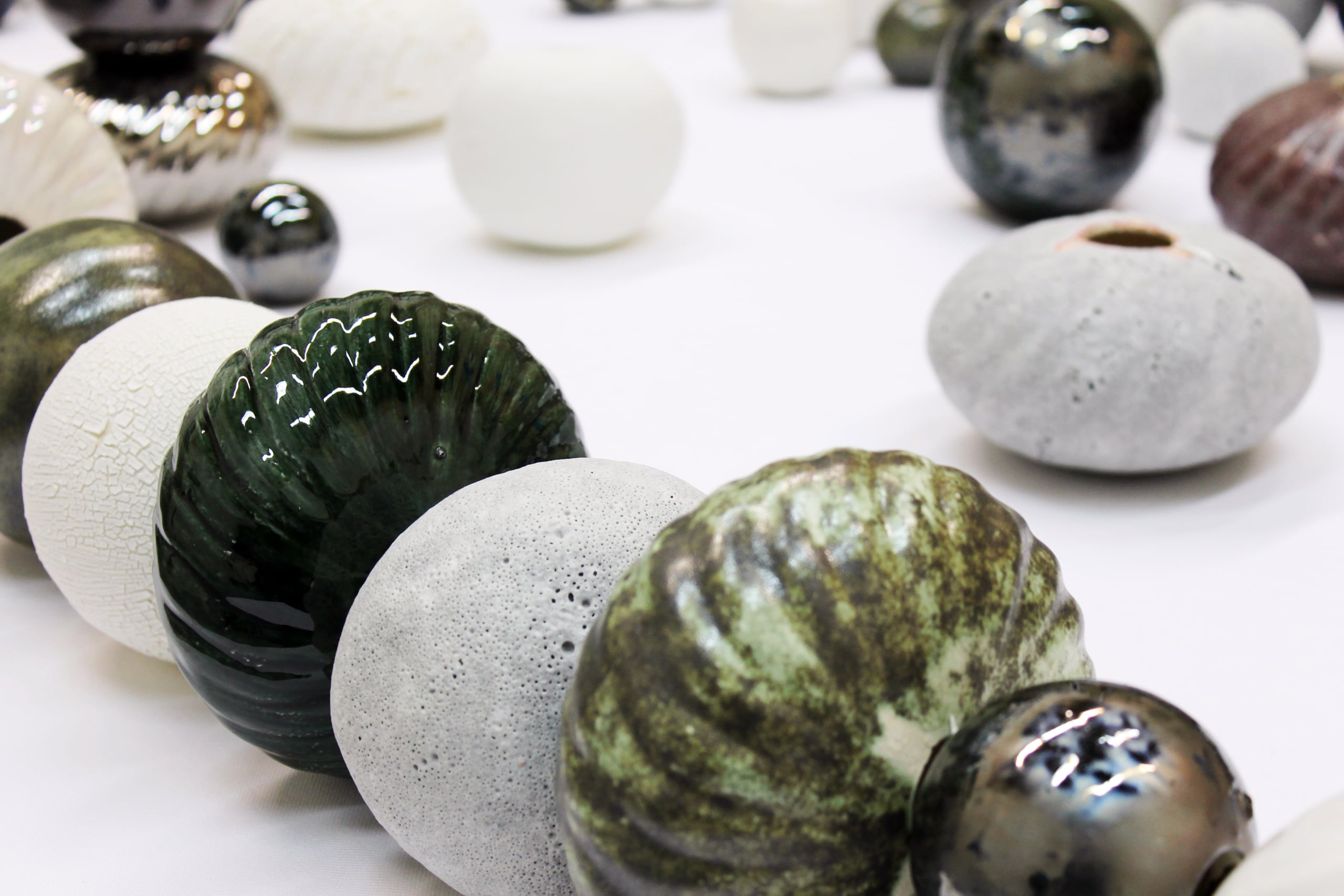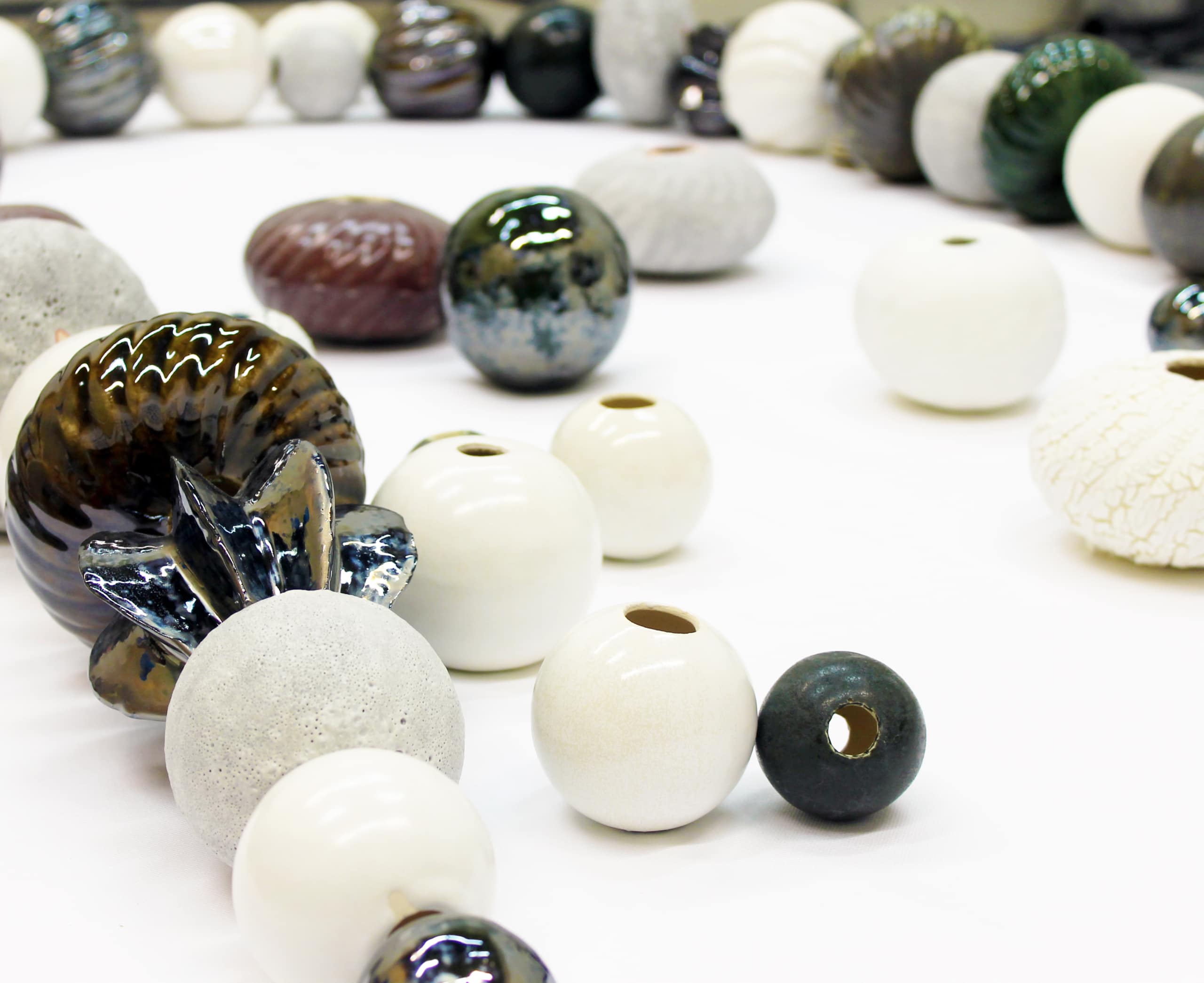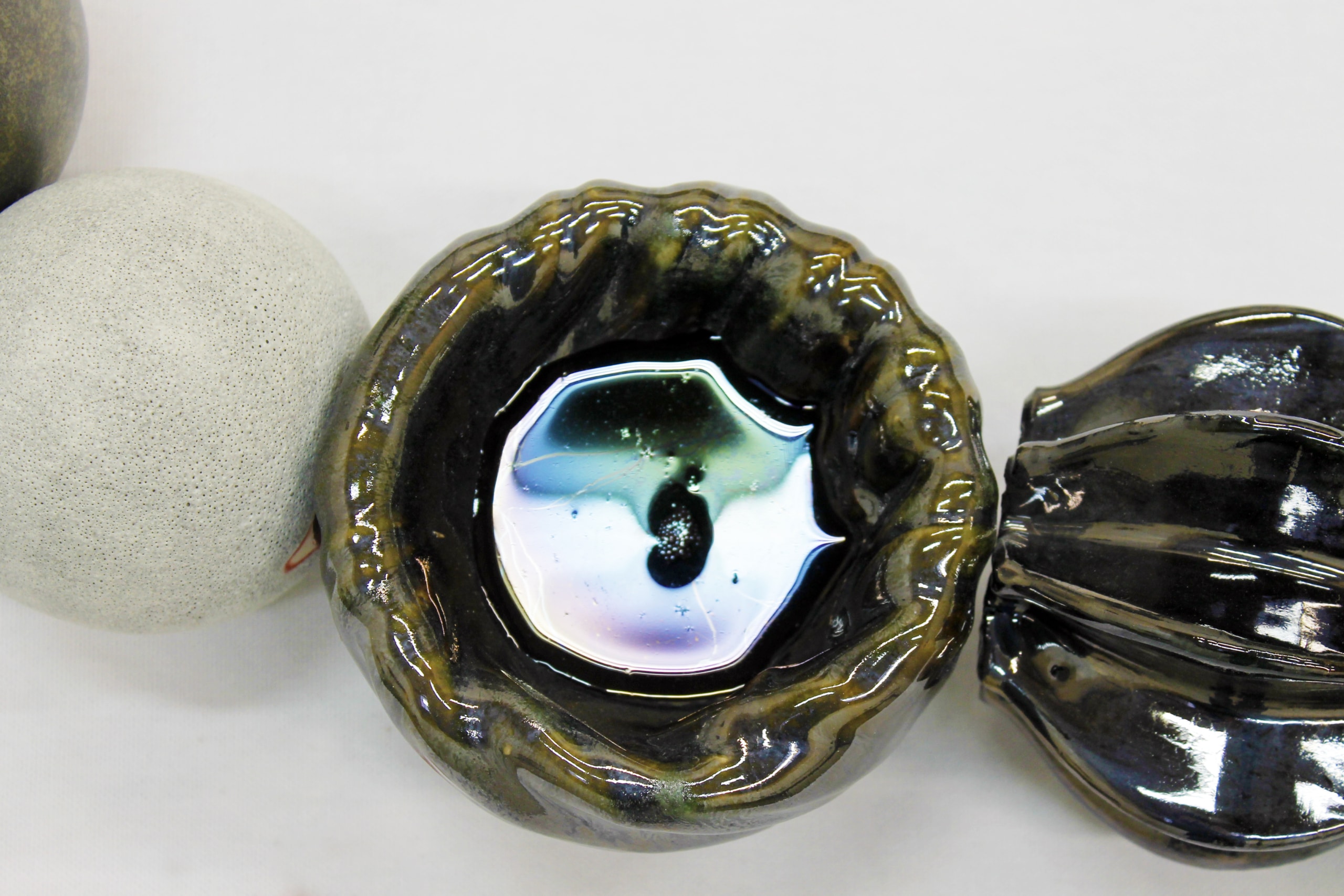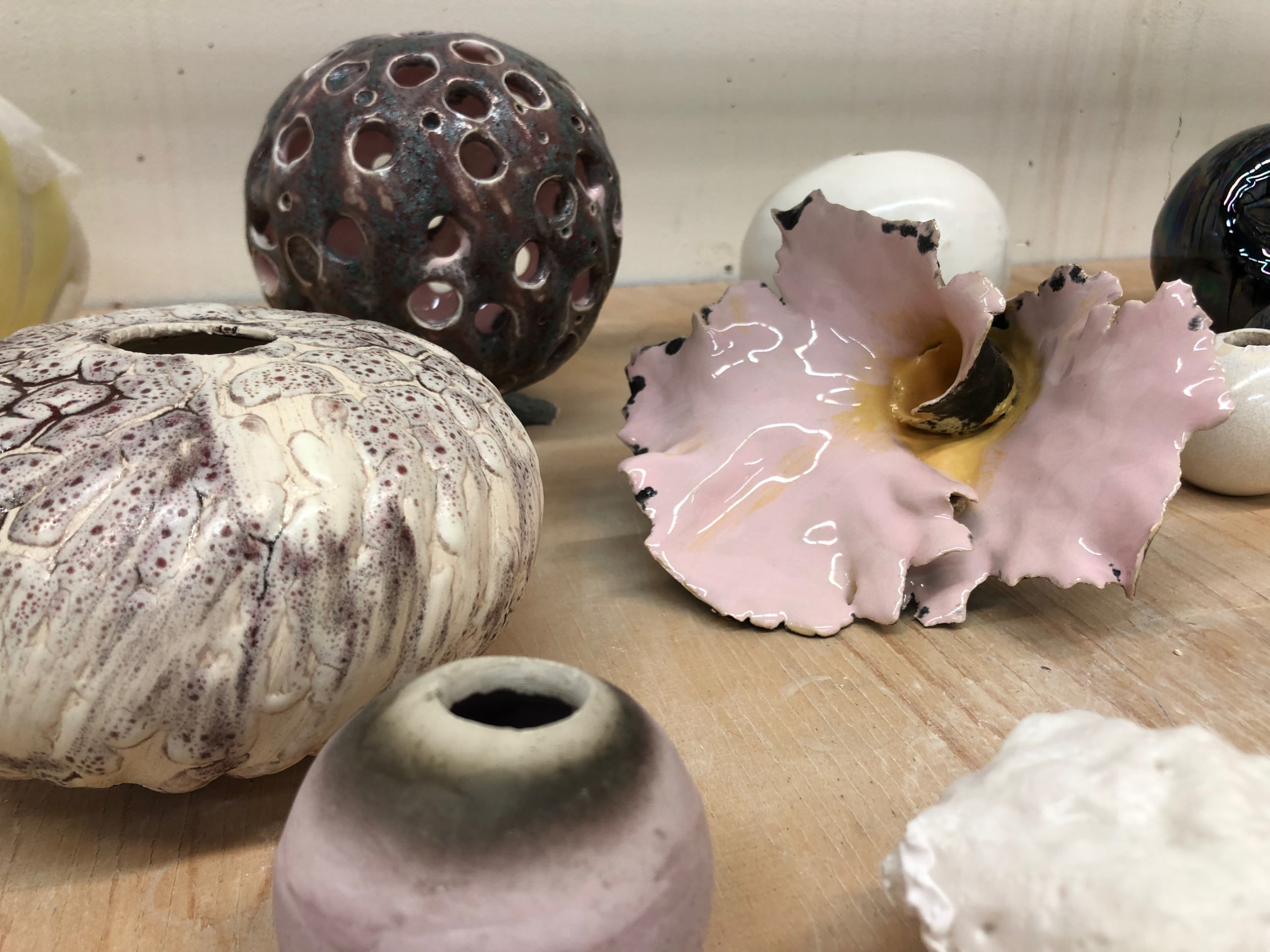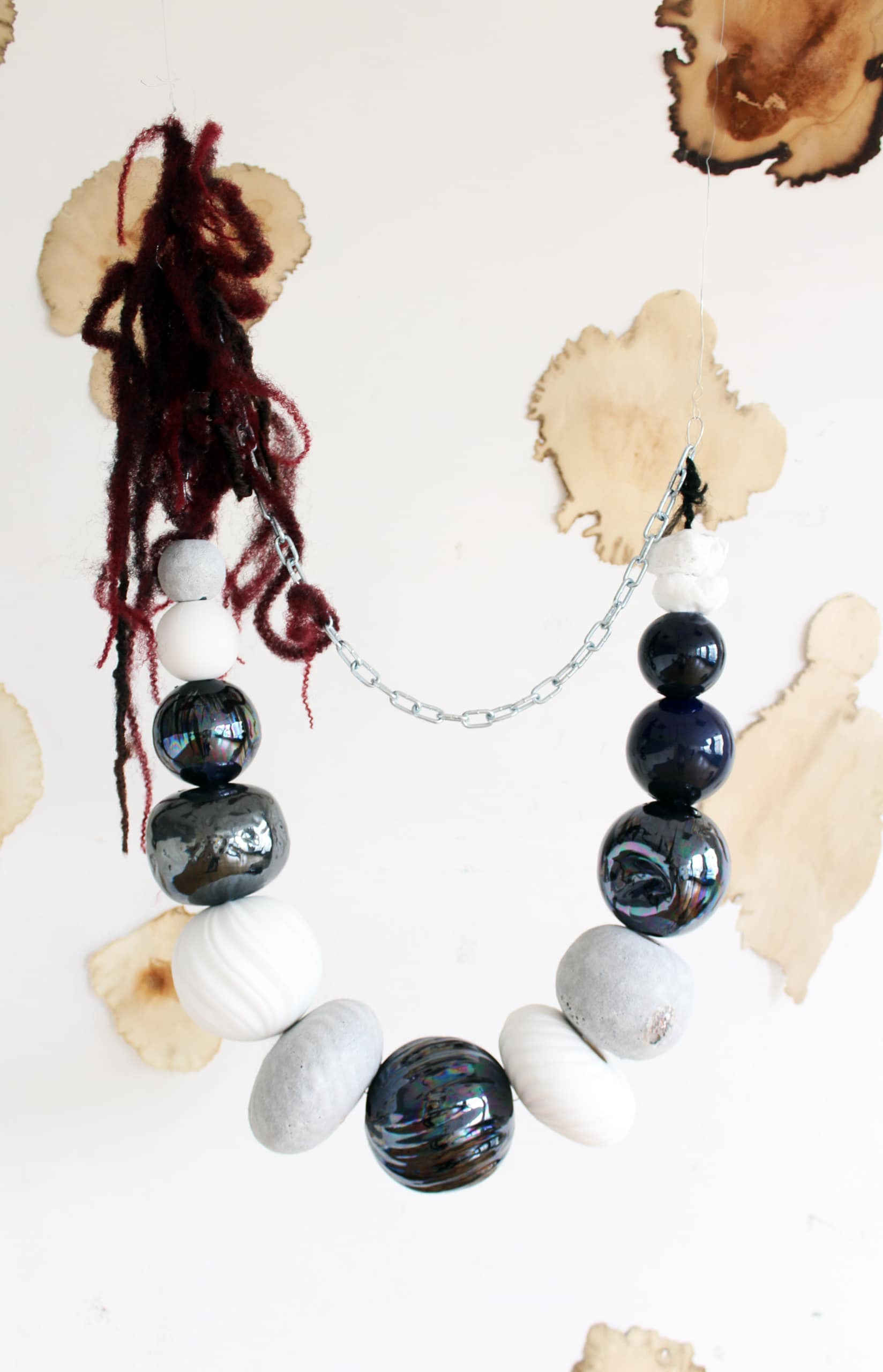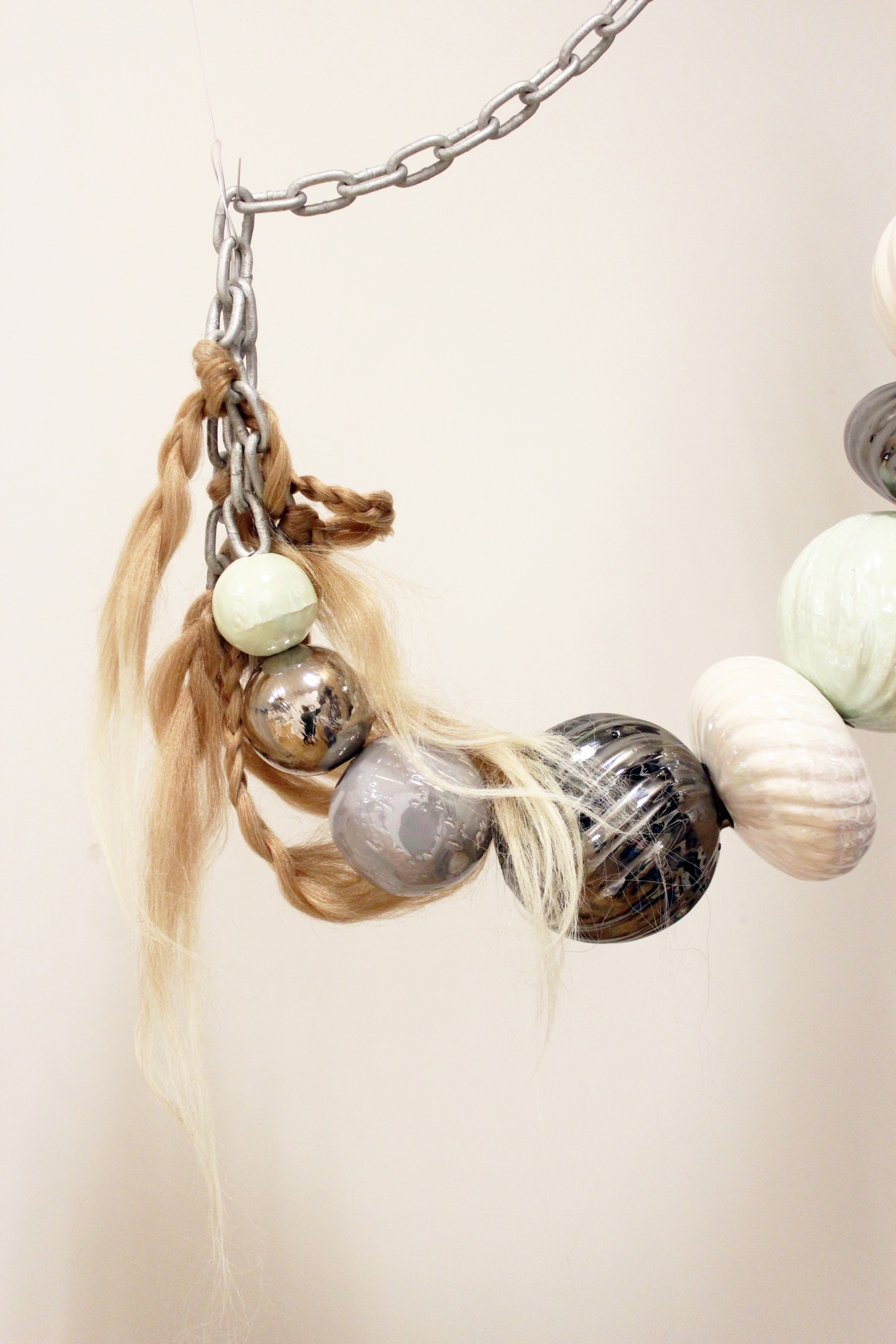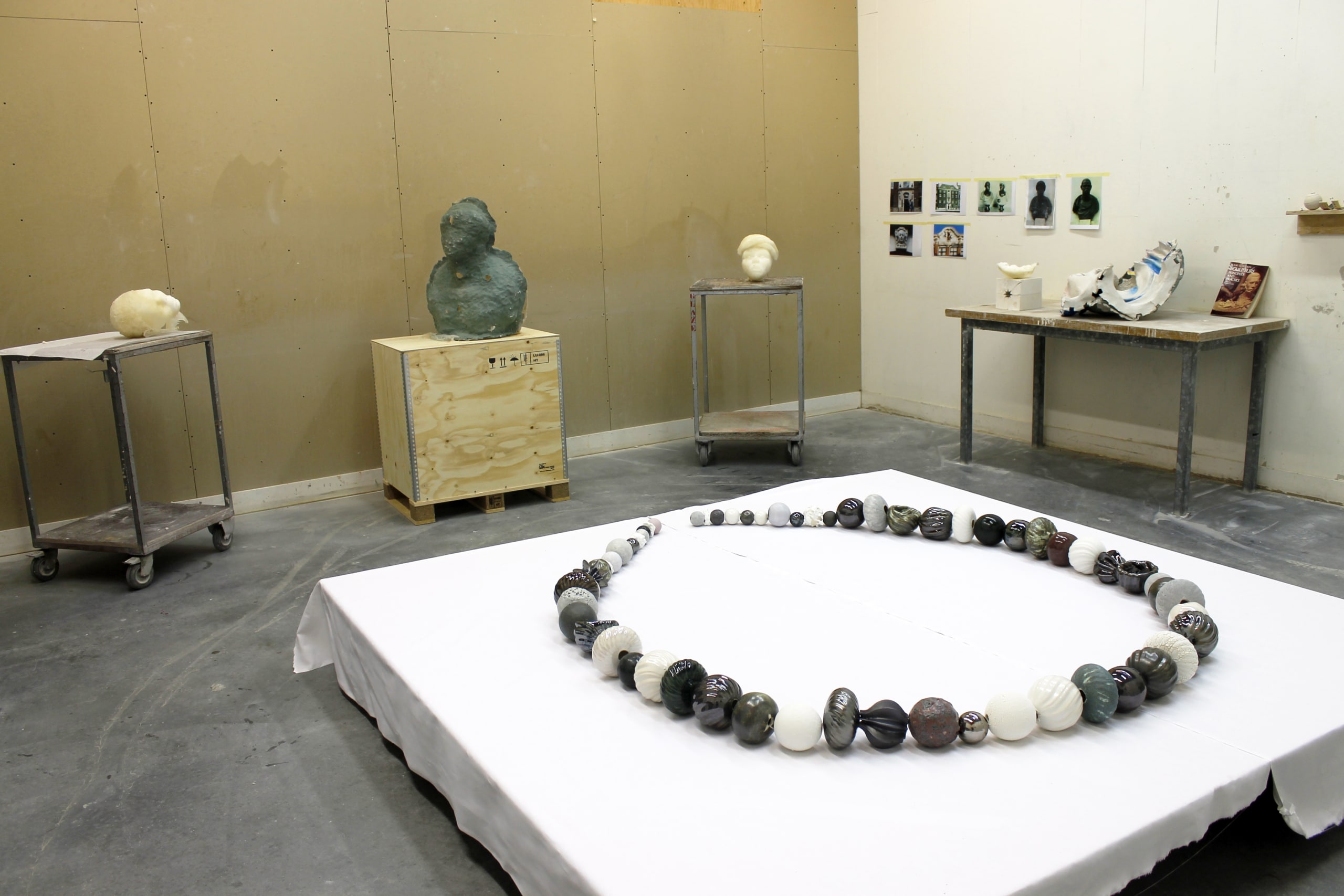Camille Blue-Valentin
| Website | www.camillebleuvalentin.wixsite.com |
| Starting date | 17-10-2024 |
| Ending date | 18-12-2024 |
Oooooo, look at those beads! Their variety, the colours, the textures and glazes… Camille Bleu-Valentin is not afraid to bait her audience with beauty. Once they’re hooked, she gently pulls them towards more critical shores. To Nantes, for example, city along the Loire that grew rich from slave trade. Its ships sailed for Africa with merchandise to trade for enslaved people, who were then sold to plantations in the French West Indies. Profits were used to buy sugar and other commodities, which were brought back to Nantes: 1714 voyages, 550,000 people. Bleu-Valentin materialises this transatlantic triangle in sugar busts, modelled after the sculptures of African peoples that commonly adorned the homes of wealthy, 16th , 17th and 18th century merchants. The beads refer to glass and ceramic beads produced in Tours to imitate precious materials from the West Indies — like pearl and coral — used in rosaries for devout upper-class believers.
Bleu-Valentin cast her beads from plaster moulds using both stoneware and porcelain slip. To achieve different glaze results, she followed different firing tracks: high and low bisque firings, high and low glaze firings. She experimented widely in her glaze research but was particularly interested in the copper saturation, mother-of-pearl and crater glazes. She hand-modelled her figurative busts and produced silicone moulds from these. Silicone allowed her to capture the fine detail of the forms while serving as an optimal mould for sugar-casting.


